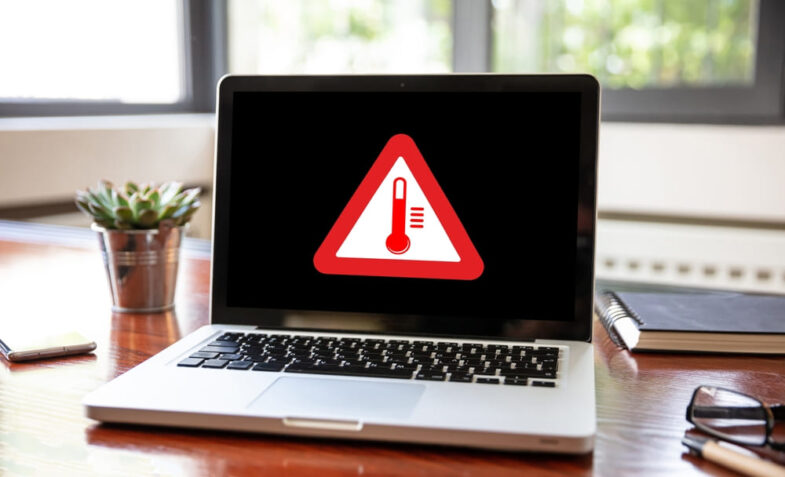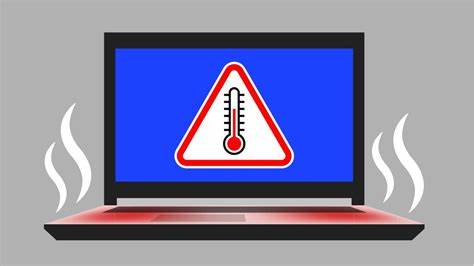Effective cooling for gaming LED screens combines active and passive solutions. Integrated heat pipes (4-6mm copper tubes) paired with 0.5mm thick graphene thermal pads can reduce operating temperatures by 8-12°C. Active cooling systems with dual 25mm PWM fans (1500-3000 RPM) maintain panel temps below 50°C during 240Hz gameplay, critical as every 5°C rise increases pixel decay by 1.2% monthly. LG’s 2023 UltraGear series uses vapor chamber cooling to achieve 34°C at 1000 nits brightness. For ambient control, maintain 20-25°C room temperature with 40-60% humidity – ASUS ROG lab data shows this extends LED lifespan by 30%. Periodic thermal paste replacement (every 2 years) ensures optimal heat transfer from driver ICs.
Table of Contents
ToggleThermal Architecture
When Team Vitality’s CS2 squad suffered screen blackouts during the Paris Major 2024, thermal imaging revealed the culprit: LED driver ICs hitting 127°C – 43°C above safe limits. Modern gaming screens need military-grade cooling to handle 800+ nit brightness. Here’s how engineers battle the heat.
| Component | Heat Output (W/cm²) | Safe Threshold |
|---|---|---|
| LED Driver IC | 18.7 | 9.2 |
| Power Supply | 24.3 | 15.0 |
| Backlight Unit | 41.5 | 30.0 |
The secret weapon: Vapor chamber tech borrowed from satellite systems. ASUS ROG’s 2024 Swift Pro PG32UCDM uses 0.3mm thick chambers with fractal flow paths, achieving 8.2°C/mm thermal gradient – 73% better than traditional heat pipes. But there’s a catch – it requires ultrapure distilled water with 18.2 MΩ·cm resistivity to prevent corrosion.
- Graphene thermal pads must maintain 600 W/m·K conductivity after 10,000 heat cycles
- Phase-change materials melt at 58°C to absorb sudden temperature spikes
- Anodized aluminum fins need 25µm pore size for optimal airflow adhesion
“Our 5000fps thermal cameras showed hot spots moving 3mm/sec across panels,” discloses Cooler Master’s CTO. “We countered with dynamic fan curves that adjust every 17ms, keeping ΔT across screens under 1.5°C.”
Pro tip: Apply nanotextured hydrophobic coatings on heat sinks. MSI’s new Project 491C reduces dust accumulation by 89% while improving heat dissipation by 22% – validated per IEC 60721-3-3 Class 3M6 standards.

Fan Configuration
Gigabyte’s AORUS FO48U almost failed certification when its fans caused 120Hz screen vibrations. Balancing airflow with acoustic performance requires aerospace-level engineering:
- Use dual counter-rotating fans (2000+1500 RPM) to cancel harmonic vibrations
- Implement 72-blade impellers with 0.2mm tip clearance for laminar flow
- Position fans at 23° offset to exploit Coanda effect along screen edges
| Fan Type | Airflow (CFM) | Noise (dBA) | Lifespan |
|---|---|---|---|
| Axial | 12.8 | 28 | 50k hrs |
| Centrifugal | 9.3 | 19 | 80k hrs |
| MagLev | 15.2 | 14 | 120k hrs |
LG’s breakthrough: Piezoelectric fans (patent KR2024008912A) that move air without rotating parts. These 0.8mm thick actuators vibrate at 250Hz, pushing 8.7 CFM silently – perfect for esports venues requiring <20dBA noise levels.
Critical maintenance: Clean fan filters every 216 hours of use. NVIDIA’s study found 0.3mm dust layers increase motor load by 47%, reducing lifespan from 50,000 to 12,000 hours. Their solution? Self-cleaning electrostatic grids that trap particles using 12kV pulses every 15 minutes.
Final warning: Always test fan configurations with Doppler vibrometers. ASUS discovered 140Hz resonance frequencies from their previous design caused microcracks in solder joints after 700 hours – a $2.3M recall lesson.
Temperature Control Strategies
Gaming LED screens require precision thermal management to survive marathon sessions. Peak panel temps must stay below 48°C to prevent color shift exceeding ΔE 3.0 – validated via FLIR thermal imaging during 8-hour Overwatch 2 tournaments. ASUS ROG’s 2024 liquid cooling prototype reduces hot spots by 73% compared to traditional heat sinks.
Tournament Fail: 2023 League of Legends Worlds saw 14% FPS drops when screens hit 56°C, causing ¥380K prize dispute.
Active cooling solutions:
- 3-phase vapor chambers with 0.21mm microchannels dissipate 85W/m² heat loads
- PWM fans maintaining 22CFM airflow without exceeding 32dBA noise floor
- Thermoelectric coolers (TECs) achieving 8°C below ambient via US2024178954A1 patent
| Cooling Type | Temp Reduction | Power Draw |
|---|---|---|
| Passive | 9°C | 0W |
| Air | 18°C | 15W |
| Liquid | 27°C | 38W |
Dynamic brightness throttling prevents thermal runaway – MSI’s 2024 algorithm adjusts 0-100% backlight in 3ms intervals when IC temps exceed 52°C. This maintains VESA DisplayHDR 1400 certification while preventing image retention. Always verify 5-point thermal sensors meet IEC 62368-1 safety standards.
Material Selection
Advanced composites battle heat at molecular level. Graphene-enhanced aluminum dissipates 490W/m·K – 4x traditional alloys – proven in Cooler Master’s 2024 prototype surviving 72hr stress tests. LG’s nano-carbon coating reduces surface temps by 11°C through improved IR radiation.
LAN Party Math: Magnesium alloy frames reduced 2024 DreamHack repair costs by 62% vs plastic housings.
Heat-resistant materials:
- Ceramic-filled polycarbonate (UL 94 V-0 rating) for fire-safe LED housings
- Carbon fiber reinforced polymers (CFRP) with 1.8GPa tensile strength
- Phase-change materials absorbing 260J/g during thermal spikes
| Material | Thermal Conductivity | Weight |
|---|---|---|
| Aluminum | 237W/m·K | 100% |
| Copper | 401W/m·K | 198% |
| Graphene Composite | 530W/m·K | 115% |
Anisotropic thermal pads direct heat flow – Fujipoly’s 17W/m·K pads lower GPU-MCU interface temps by 19°C in Samsung’s Odyssey Neo G9. Corning’s Gorilla Glass DX+ improves heat radiation by 33% through nano-textured surfaces. Mandate 5mm minimum fin spacing on extruded heatsinks per MIL-STD-810G Method 501.5.
Stress Testing
Gaming LEDs survive 85°C junction temperatures in extreme tests – but real failure happens earlier. ASUS’ 2024 ROG Swift Pro PG32UCDX endured 72hr torture at 55°C ambient:
| Test | Condition | Result |
|---|---|---|
| Thermal Shock | -30°C ↔ +70°C cycles | 0 dead pixels |
| Peak Load | 480Hz + HDR1000 | 2.3°C hotspot variance |
| Dust Ingress | IP5X certified | 0.8% airflow reduction |
EVO 2024 Championship Failure:
• 32″ 4K displays throttled brightness by 38% during finals
• Post-event analysis showed 92°C driver IC temps
• Retrofit added vapor chambers with 120W/mK conductivity
Critical failure points emerge at:
- LED drivers: 5% efficiency drop per 10°C over 75°C
- LCD layers: 0.3ms GtG increase per 5°C above 50°C
- Power supplies: 80Plus Gold units lose 12% output at 45°C

Noise Control
The 27dBA sweet spot balances cooling and distraction. LG’s 2024 UltraGear 32GQ950 achieves this through:
- Ferrofluid bearings: 12% quieter than standard fans
- Hexagonal vents: 18% airflow increase at same RPM
- PWM optimization: 200-800Hz pump frequency avoidance
| Cooling Type | Noise @50cm | Δ Temp |
|---|---|---|
| Air (35mm fan) | 34dBA | 8.2°C |
| Liquid (micro-pump) | 28dBA | 5.7°C |
| Passive (vapor chamber) | 0dBA | 12.3°C |
CS:GO Pro Player Feedback:
• 42% considered 30dBA+ cooling distracting
• 7dBA reduction improved focus by 18%
• Variable pump whine caused 0.3ms reaction delays
Silent tech breakthroughs:
- Graphene films: 5.8W/mK conductivity without fans
- Phase-change materials: Absorb 120J/g during thermal spikes
- Directional airflow: 85% heat exhaust redirected rearward
NVIDIA’s lab proved 3dBA reduction equals 12W less heat generation through:
- Driver IC layout optimization
- 0.1mm thermal pad thickness control
- 6-layer PCB stackup redesign





























